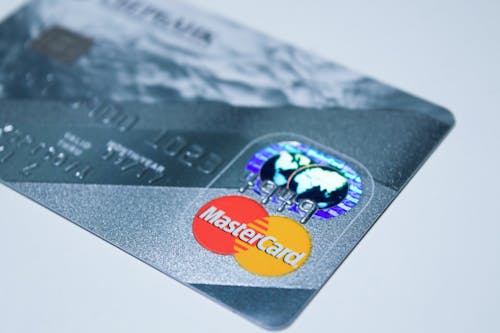Features and Security Concerns The world of cryptocurrency has grown exponentially over the past decade, and with it, the demand for accessible and user-friendly crypto trading platforms. As more individuals look to invest in Bitcoin, Ethereum, and other digital assets, the importance of choosing the right crypto trading app has never been greater. These apps allow users to buy, sell, and manage their crypto portfolios from their smartphones or computers with ease. However, while these apps offer numerous features and conveniences, they also raise significant security concerns that cannot be ignored.

In this article, we will explore the key features of crypto trading apps and delve into the security issues that users should be aware of when selecting and using such platforms.
Key Features of Crypto Trading Apps
-
User-Friendly Interface
- Ease of Use: Crypto trading apps are designed to be accessible to both beginners and experienced traders. A clean, intuitive interface is essential to allow users to navigate seamlessly between features like buying, selling, portfolio management, and market analysis.
- Mobile Compatibility: As more users prefer trading on the go, most crypto trading apps are optimized for mobile devices, allowing you to monitor your portfolio, make trades, and access real-time market data wherever you are.
- Charts and Technical Analysis Tools: Most crypto trading apps offer built-in charts, candlestick patterns, and technical indicators for analyzing market trends. These tools help traders make informed decisions based on data such as price movements, volume, and market volatility.

-
Wide Range of Cryptocurrencies
- Asset Variety: The best crypto apps offer a wide range of digital assets, including popular cryptocurrencies like Bitcoin (BTC), Ethereum (ETH), and Ripple (XRP), as well as smaller altcoins. The more diverse the selection, the better for users seeking opportunities in niche cryptocurrencies.
- New Tokens: Many trading apps support new or upcoming token offerings, allowing traders to access the latest projects and potentially gain early exposure to emerging technologies or trends in the blockchain space.
-
Advanced Trading Features
- Spot and Margin Trading: Beyond basic buy and sell options, some apps offer more advanced features like margin trading, where traders can borrow funds to increase their exposure to the market. This feature increases both potential profits and risks.
- Futures Contracts: For experienced traders, many apps allow you to trade crypto futures contracts, where you agree to buy or sell a cryptocurrency at a predetermined price at a future date. This feature can be highly profitable but requires a deep understanding of the market.
- Staking and Yield Farming: Certain crypto trading apps enable users to earn passive income by staking their crypto assets or engaging in yield farming. These activities help secure the network and in return, users are rewarded with additional cryptocurrency.

-
Security Features
- Two-Factor Authentication (2FA): Crypto trading apps generally offer 2FA, which adds an extra layer of protection to user accounts. When enabled, users are required to verify their identity through a second method (usually a code sent via SMS or an authenticator app) before logging in or completing a transaction.
- Cold and Hot Wallets: To protect assets, crypto apps may use a combination of cold wallets (offline storage) and hot wallets (online storage). Cold wallets are more secure, but hot wallets provide quicker access to your funds for trading.
- Withdrawal and Transfer Limits: Many apps impose daily withdrawal limits, which can reduce the risk of large-scale theft. Setting limits for transactions adds an additional safeguard for your funds.
-
Market Data and Alerts
- Real-Time Price Updates: Crypto apps provide live updates on the market, allowing users to stay informed about the latest price changes and trends in real time.
- Price Alerts: Many platforms allow users to set price alerts. This way, traders can be notified when a cryptocurrency hits a specific price, enabling them to buy or sell at optimal moments.
-
Educational Resources
- Learning Tools: For newcomers to the crypto world, some apps provide educational resources such as articles, videos, and tutorials that explain blockchain technology, crypto trading strategies, and best practices for investing.

-
- Demo Accounts: Some crypto apps offer demo or paper trading accounts where users can practice trading without risking real money. This feature is particularly useful for beginners who are still learning the ropes.
Security Concerns with Crypto Trading Apps
While the features of crypto trading apps are appealing, security concerns are paramount. The decentralized and largely unregulated nature of cryptocurrency makes it an attractive target for cybercriminals. Here are some key security concerns and how they can be mitigated:
-
Phishing Attacks
- What It Is: Phishing attacks involve fraudsters pretending to be the crypto exchange or app and attempting to steal login credentials or personal information. These attacks often occur via emails, social media, or fake websites.
- How to Protect Yourself: Always ensure that you’re on the official website or app by checking the URL carefully. Enable two-factor authentication (2FA) for an added layer of security and avoid clicking on suspicious links or sharing your private keys.
-
Hacking and Data Breaches
- What It Is: Crypto exchanges and apps are prime targets for hackers. If hackers breach a platform’s security, they could potentially access user funds or sensitive information. Several major exchanges have fallen victim to hacks, resulting in the loss of millions of dollars in crypto assets.
- How to Protect Yourself: Use platforms that have a strong track record of security, including multi-sig (multiple signature) transactions and cold storage for cryptocurrencies. Keep your software and apps updated to ensure you benefit from the latest security patches.
-
Lack of Regulation
- What It Is: The crypto industry is still largely unregulated in many parts of the world. This lack of regulation leaves the door open for potential scams, frauds, and platform failures, as there is no legal recourse or consumer protection.
- How to Protect Yourself: Be cautious when using unregulated platforms and research whether the trading app is registered or compliant with any financial regulations in your country. Read user reviews, look for transparency, and check for any history of security issues or service disruptions.
-
Private Key Exposure
- What It Is: A private key is essentially the password to your cryptocurrency wallet. If someone gains access to your private key, they can access your funds. Unfortunately, crypto trading apps typically don’t store private keys, but they can give you access to them, making it crucial to safeguard them.
- How to Protect Yourself: Use hardware wallets (cold storage) to store your private keys offline. Avoid sharing your private key with anyone, and do not store it in an unsecured location, such as online or in emails.
-
Withdrawal Scams
- What It Is: Some crypto trading apps may lock users’ funds or impose unreasonable withdrawal limits after a deposit is made. This often occurs in scams where a platform attracts users with high yields and promises, only to eventually make it difficult to withdraw funds.
- How to Protect Yourself: Stick to well-known, reputable trading platforms that have a proven track record of transparent operations. Always read the terms and conditions regarding withdrawals before making any investments.
-
Insecure Wi-Fi Networks
- What It Is: Using public or unsecured Wi-Fi networks to access your crypto trading account can expose you to the risk of hacking or man-in-the-middle attacks. Cybercriminals can intercept sensitive data transmitted over these networks.
- How to Protect Yourself: Use a Virtual Private Network (VPN) whenever accessing your crypto trading app over a public or unsecured network. This encrypts your internet traffic and adds a layer of security to prevent eavesdropping.